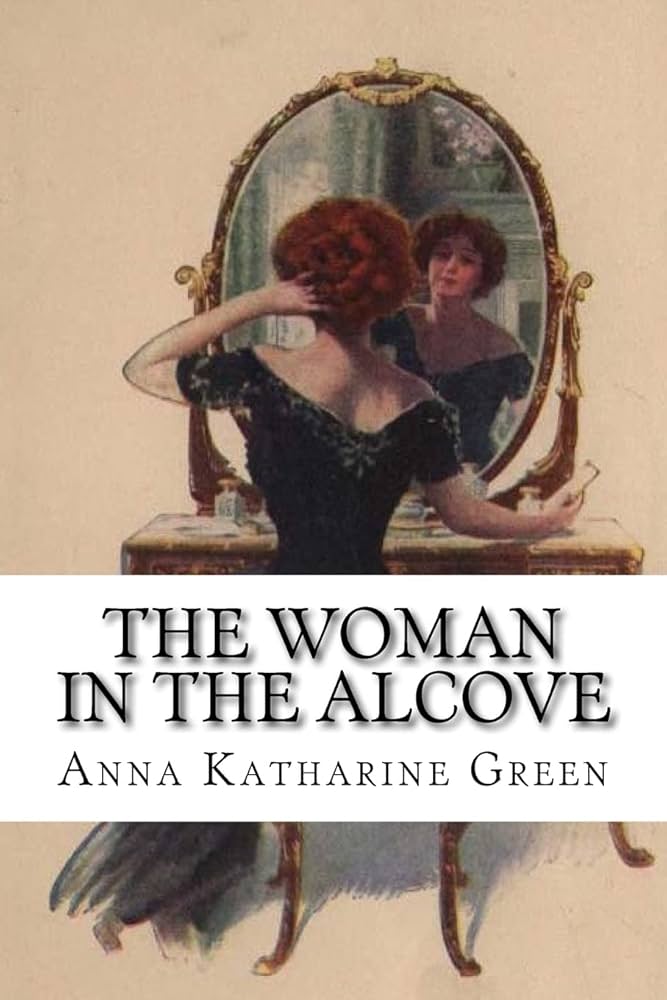Chapter XXIII — The woman in the Alcove
byChapter XXIII — The woman in the Alcove casts its final shadows over two men bound by a single jewel and torn apart by ambition. The arrangement seemed simple enough—meet in Boston, exchange the diamond for a life spared, and part ways with unfinished accounts now settled. Grey, desperate to reclaim what was stolen, and Fairbrother, driven by schemes woven with pride and desperation, both entered the fog with different intentions. Fairbrother never meant to honor the pact. Armed and ready, he planned to disappear into the mist, boarding the launch and vanishing beyond reach. He believed Grey would not dare call the authorities for fear of implicating himself. But in the thick veil of night and uncertainty, it was Grey’s bullet—not Fairbrother’s—that found its mark.
Fairbrother’s end was sudden yet strangely theatrical. Even in defeat, he clung to illusion. When they found him, his cloak masked the gruesome evidence of a life lived in deception and concluded in violence. He had tried to conceal not only his wounds but the very reality of his failure. Once a man of intricate plans and bold confidence, he now lay motionless—an emblem of cunning turned to ruin. His charm, so often a shield, could no longer deflect the truth. And with his last breath, he joined the long history of those who confuse cleverness with wisdom, and ambition with righteousness.
As for Grey, the victory rang hollow. The diamond, once reclaimed, could not restore what was lost. His daughter, the quiet joy of his life, had faded during his transatlantic pursuit of justice. By the time the courts had sided with him and the gem had returned to his possession, the illness had already claimed her. Grey returned to England, not as a victor but as a grieving father. The legal triumph did little to soften the weight of his sorrow. In his study, beneath portraits now dulled by grief, the diamond sat—brilliant yet meaningless, untouched by the memory it was once meant to honor.
The story does not ask its readers to mourn Fairbrother, yet it paints him as more than a villain. He was a man with talent, boldness, and imagination—misused, yes, but undeniably remarkable. His fall wasn’t from ignorance, but from arrogance, a belief that he could outwit fate as he had outwitted others. And when he failed, he chose to fall with drama, as if shaping his own legend even in death. Grey, in contrast, was undone not by foolishness, but by the cold arithmetic of sacrifice. He chose justice and paid in love.
Together, these two figures embody a grim symmetry. One pursued gain at any cost, the other clung to honor at great expense, and both were left broken. Their tale, wound around a diamond—a symbol of clarity and perfection—becomes instead a meditation on how flawed human hearts can become. No reward gleams bright enough to erase betrayal, no justice arrives swiftly enough to heal a dying child. In the end, they both stood alone, one felled by greed, the other by grief. Their paths diverged early, yet led to the same cold conclusion.
What lingers after their story ends is not the fate of the diamond, but the ruin left in its path. The woman in the alcove—the silent witness to so many secrets—might symbolize what the men themselves could not see: that some treasures are not meant to be won, but guarded with reverence. Her presence, brief yet profound, reflects the theme beneath all the mystery and pursuit. In every corner of this story lies a truth both sobering and enduring: that when ambition blinds and vengeance burns, what is left behind is not triumph, but the empty silence of loss.


